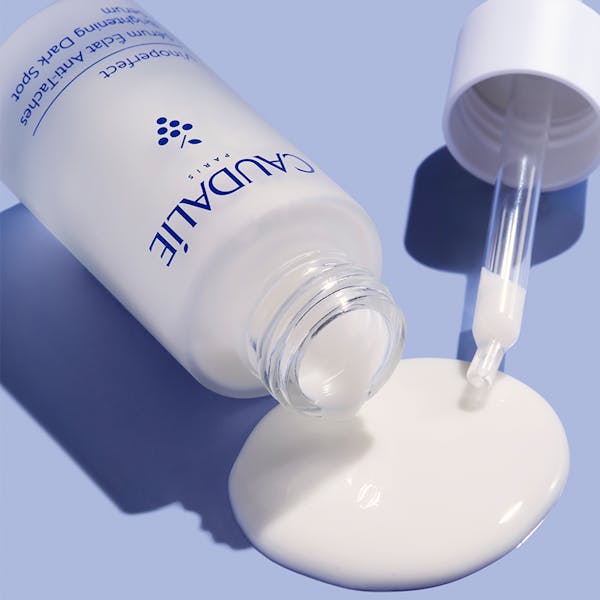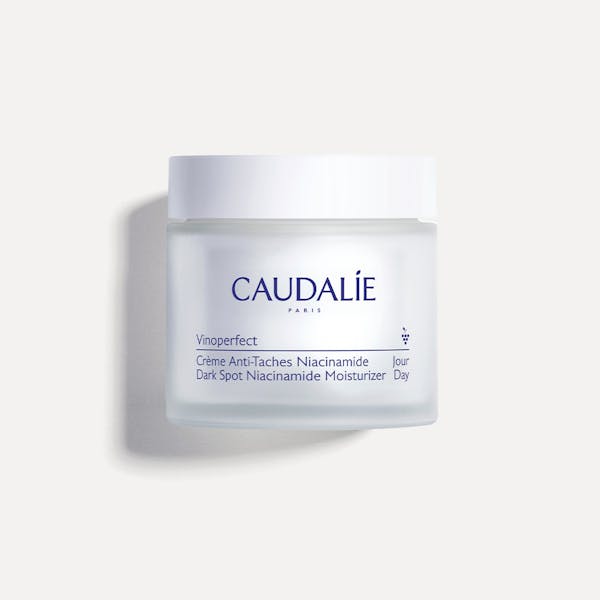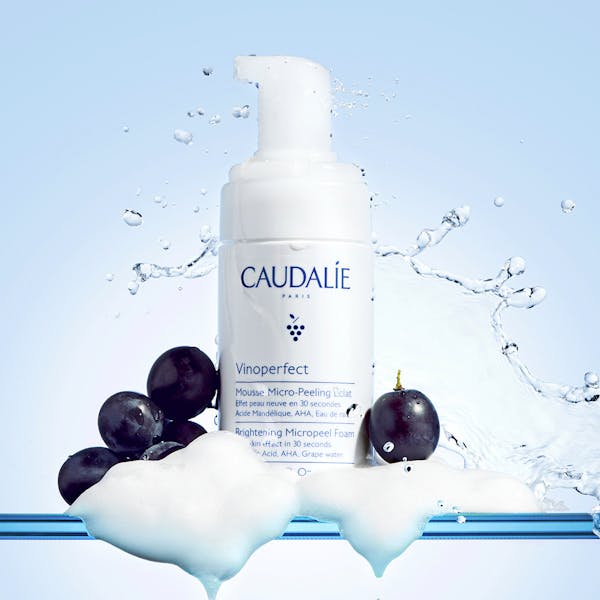Dark spots can be stubborn, but science-backed ingredients like viniferine and grape polyphenols in Caudalie’s Vinoperfect routine target pigmentation at its root. Combining glycolic acid, grape water, and targeted serums helps fade brown spots and even out skin tone over time. With patience and the right routine, clearer, more uniform skin becomes achievable. Ready to see what consistent care can do?
Summary
What is lentigo?
Lentigo is a common skin concern that manifests as flat, pigmented spots, often linked to sun exposure and ageing.
The different types of lentigo
There are mainly two types: solar lentigo, which appears after years of sun exposure, and age-related lentigo, also called senile lentigo, which tends to develop as part of the natural ageing process. Solar lentigo usually shows up on sun-exposed areas like the face, hands, and arms, while ageing spots can appear anywhere, especially on the cheeks and neck. Recognising the type can help you choose the right treatment and prevention strategies.
Common areas affected by this skin concern
Lentigo tends to show up on parts of the body that get the most sun, such as the cheeks, forehead, and the bridge of the nose. It can also appear on the neck and the backs of the hands—places that often go unnoticed but are exposed to UV rays daily. Paying attention to these areas is key to early intervention and better results.
How does this condition differ from other pigmented spots?
Unlike moles, which are usually raised and have irregular borders, lentigo is flat, with a smooth, even surface. Its colour is typically uniform, ranging from light brown to dark brown, and it doesn’t change shape or size rapidly. This makes it distinguishable from other spots like post-inflammatory hyperpigmentation or freckles, which tend to be smaller or fade over time. Recognising these differences is crucial for deciding whether you need professional treatment or simple sun protection.
What causes lentigo?
Knowing what triggers this skin concern helps you protect your skin better and prevent new spots from forming. The main culprits are sun exposure, skin ageing, and genetics.
Sun exposure and solar lentigines
Sunlight is the biggest factor. UV rays stimulate melanin production, which can lead to brown-pigmented areas—commonly known as sun spots. These tend to appear on areas most exposed to the sun, like the face, hands, and forearms. Protecting your skin with daily SPF, wearing hats, and avoiding peak sun hours are essential steps to reduce their development.
Ageing skin and visible signs of ageing
As we get older, our skin’s ability to repair itself diminishes. Collagen production slows, and age-related spots, sometimes called liver spots, become more noticeable. These spots usually show up on the cheeks, forehead, and neck. Incorporating anti-ageing skincare with ingredients like vitamin C or viniferine can help slow their appearance.
Genetics and skin type
Some people are naturally more prone to developing pigmentation concerns, especially those with fair or sensitive skin. Your genetic makeup influences how your skin reacts to sun exposure and ages. Even if your skin is more resistant, daily sun protection remains vital to prevent pigmentation spots from forming.
How to treat lentigo?
Effective treatment of this skin concern involves targeted ingredients and proper skincare habits to fade spots and prevent new ones from forming.
Topical treatments for lentigines on the face
Choosing the right products is crucial. Look for formulations containing viniferine, glycolic acid, or fruit acids, which work to accelerate cell renewal and inhibit melanin production. Applying these consistently, ideally twice daily, helps to gradually lighten dark spots and even out skin tone. Patience and regularity are key—results take time but are worth the effort.
The benefits of grapevine natural ingredients
Caudalie’s approach is rooted in harnessing the power of grapevine-derived ingredients, which are rich in antioxidants and skin-brightening compounds:
Viniferine: a patented extract from vine sap, which is 62 times more effective than vitamin C at correcting dark spots. In vitro test on tyrosinase inhibition.
Niacinamide: also known as vitamin B3, it reduces enlarged pores and calms sensitive skin.
Glycolic acid: gently exfoliates dead skin cells, revealing a brighter, more radiant complexion.
White peony: boosts radiance, illuminates, and evens out skin tone.
Fruit acids: of natural origin and made in France, these AHAs stimulate cell renewal for a fresher look.
Organic grape water: hydrates, soothes, and strengthens the skin’s microbiota, promoting healthier skin.
Best skincare practices for sensitive skin and getting clear skin
For sensitive skin, the key is a gentle yet effective routine. Start with a mild, hydrating cleanser, then layer your products in the right order: essence, serum, eye cream, and moisturiser. Always finish with a broad-spectrum SPF in the morning to shield your skin from UV damage. Use calming ingredients like grape water and avoid harsh scrubs or aggressive acids. Consistency, gentle handling, and sun protection are your best allies in creating a skin that looks calm, balanced, and radiant.
When to see a dermatologist?
It’s important to consult a dermatologist if you notice any changes in your lentigo, such as an increase in size, a shift in shape, or a change in colour. If a spot appears suddenly or looks different from your usual pigmentation, professional advice is essential to rule out any serious concerns. Additionally, seek medical attention if pigmentation issues persist or worsen despite using targeted treatments—early diagnosis and intervention can make all the difference in managing skin health effectively.
The Vinoperfect routine by Caudalie
To brighten and even out your skin tone, follow a simple four-step routine with Caudalie’s Vinoperfect range:
1. Start with the Brightening Micropeel Foam to gently cleanse and exfoliate, preparing your skin with organic grape water and fruit acids. Follow with the Glycolic Acid Face Peel Mask, which uses viniferine to target dark spots and glycolic acid to boost radiance.
2. Next, apply the Glycolic Acid Essence to hydrate and brighten, then layer on the Dark Spot Serum for Radiance, which combines viniferine and olive squalane to fade dark spots and soothe the skin.
3. For the eye area, use the Dark Circles Eye Cream, formulated with niacinamide and caffeine to reduce puffiness and dark circles.
4. Finally, finish with the Dark Spot Niacinamide Moisturiser during the day to brighten and even skin tone, and the Glycolic Night Cream at night, which contains papaya enzyme and viniferine to promote cell renewal and correct dark spots.
By grasping the intricacies of skin pigments and the factors that influence their production, individuals can better navigate the complex world of skincare. The Vinoperfect routine by Caudalie offers a thoughtful approach to addressing pigmentation concerns, featuring a carefully curated selection of products that work in harmony to promote a brighter, more even-toned complexion. As the skin responds to treatment, the appearance of dark spots and discoloration gradually recedes, unveiling a smoother, more resilient skin texture.
LATEST BEAUTY NEWS
- Personal data & Cookies
- T&C
- Legal Note
- Loyalty Program
- MYCAUDALIE terms
© Caudalie Copyright












